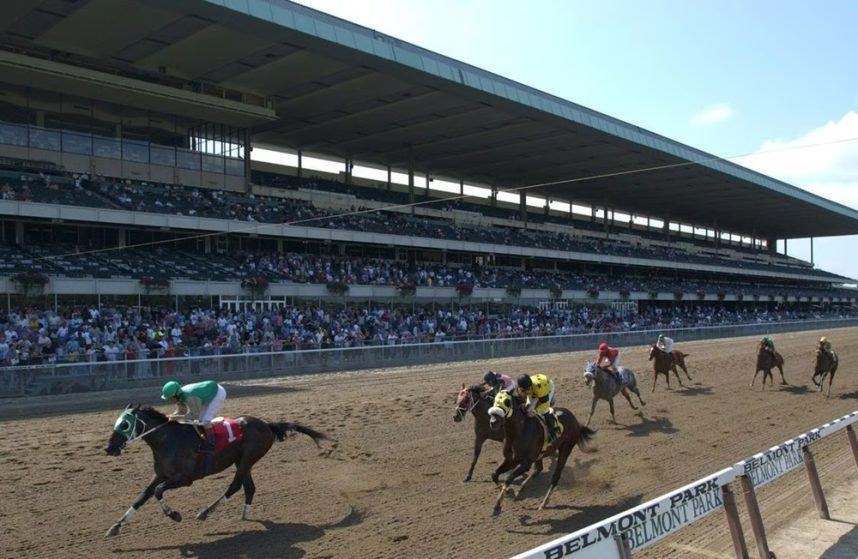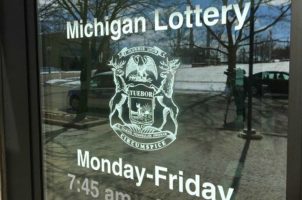New York Racing Studying Nationwide Adoption of Synthetic Tracks
Posted on: February 19, 2024, 03:05h.
Last updated on: February 20, 2024, 12:36h.
Could America’s horse racetracks, from Santa Anita to Saratoga, soon be carpeted entirely with synthetic surfaces? That’s exactly what a new committee established by the New York Racing Association (NYRA) wants to discover.

The racing body’s All-Weather Surfaces Committee is composed of racing industry stakeholders who will study the impact of different surfaces on equine injuries and deaths.
It will also examine the feasibility of a nationwide adoption of synthetic surfaces, also known as “all-weather” surfaces.
The move comes amid controversy over equine deaths at racetracks across America, including 12 at last year’s Kentucky Derby. The nonprofit group, Horseracing Wrongs, estimates that more than 2,000 racehorses perish each year in the U.S. That includes fatalities that occur off-track, during training, or in the stalls.
Meanwhile, equine deaths on synthetic surfaces are around half of those on turf and a third of those on dirt tracks, according to the Equine Injury Database. That’s largely because these surfaces allow for consistently stable conditions for horse racing, even in bad weather, eliminating the soggy or uneven tracks that can cause horses to stumble.
Synthetic is Safer
From 2009-2022, there were 534 equine deaths on synthetic surfaces from 482,169 starts, which equates to 1.11 per 1,000 starts. That’s compared with 6,036 fatalities on dirt from 3,242,505 starts (1.86 per 1,000) and 1,032 from 728,445 starts on grass (1.41 per 1,000).
Synthetic surfaces aren’t so popular with traditionalists, though, who savor the sound of hooves thundering on turf and dirt flying in their wake.
And gamblers, who pride themselves on analyzing the track conditions — and how a particular horse performs under those circumstances – may complain the surfaces remove some of the fun of betting. Bettors also complain the surfaces make performances unpredictable.
In 2007, California racing officials made synthetic surfaces mandatory at tracks, but later relented when the experiment proved a failure. Santa Anita, for example, spent millions converting its track only to find the new artificial surface did not perform adequately under extreme temperatures. It was also plagued by drainage issues.
Belmont Park Experiment
But the quality of modern synthetic tracks has improved since, as has knowledge about how to properly maintain them. Several tracks in North America are now either partly or fully synthetic, including Gulfstream Park in Florida, Woodbine in Canada, Turfway Park in Ohio, Presque Isle Downs in Pennsylvania, and Golden Gate Fields in California.
The NYRA is constructing a one-mile synthetic-surface track at Belmont Park, home of the Belmont Stakes, as part of a $455 million renovation, a potential watershed.
“When you get to the debate of synthetics, there’s a lot of information out there. But it’s not really been brought together comprehensively, not in this format,” NYRA president and CEO David O’Rourke told the Associated Press.
“I think really the main theme here would be integration of synthetics and where it makes sense, where it’s economically viable,” he added.
Related News Articles
Encore Boston Harbor Halts Development Plan, Project To Be Reevaluated
Michigan $1M Winning Lottery Ticket Saved from Trash
Most Popular
FTC: Casino Resort Fees Must Be Included in Upfront Hotel Rates
Genovese Capo Sentenced for Illegal Gambling on Long Island
NBA Referees Expose Sports Betting Abuse Following Steve Kerr Meltdown
UPDATE: Former Resorts World & MGM Grand Prez Loses Gaming License
Most Commented
-
UPDATE: Whiskey Pete’s Casino Near Las Vegas Closes
— December 20, 2024 — 32 Comments -
Caesars Virginia in Danville Now Accepting Hotel Room Reservations
— November 27, 2024 — 9 Comments -
UPDATE: Former Resorts World & MGM Grand Prez Loses Gaming License
— December 19, 2024 — 8 Comments -
FTC: Casino Resort Fees Must Be Included in Upfront Hotel Rates
— December 17, 2024 — 7 Comments
















No comments yet